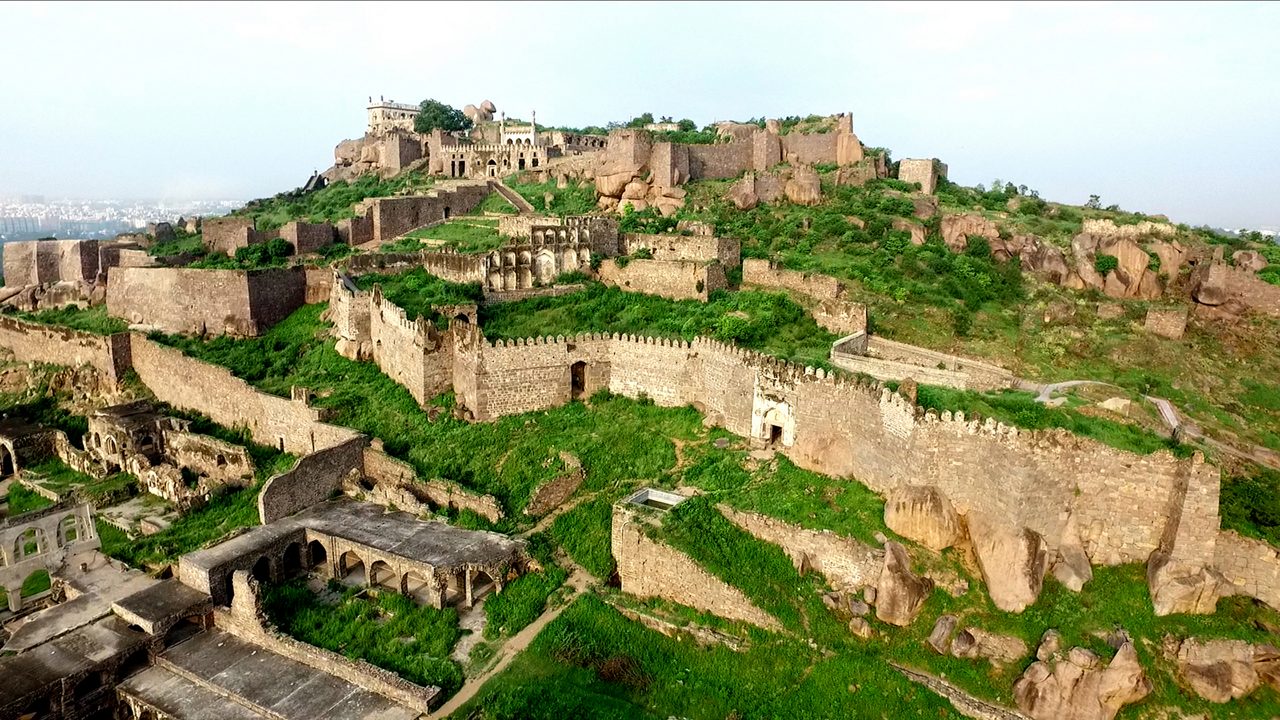
Golconda Fort: A Historical Gem Facing Modern Challenges
Golconda Fort, the 16th-century citadel that once served as the capital of the Qutb Shahi dynasty, continues to stand as a testament to Hyderabad’s rich historical and architectural legacy. Located on the outskirts of the city, the fort attracts thousands of tourists annually, drawn to its intricate architecture, acoustic marvels, and storied past. However, recent developments have sparked discussions about its preservation and the balance between tourism and heritage conservation.
A Glimpse into Golconda’s Past
Originally built as a mud fort in the 13th century by the Kakatiya dynasty, Golconda was transformed into a formidable granite stronghold under the Qutb Shahi rulers in the 16th century. The fort, sprawling across 10 square kilometers, is renowned for its innovative acoustic system, where a clap at the entrance gate can be heard at the highest point, the Bala Hissar pavilion. This engineering marvel, coupled with its grand palaces, mosques, and water systems, reflects the ingenuity of its builders.
Golconda was also a thriving trade hub, particularly for diamonds. The legendary Koh-i-Noor, Hope, and Daria-i-Noor diamonds are believed to have been mined from the region’s Kollur mines and traded within the fort’s walls. The fort’s strategic location and robust defenses made it a coveted prize, eventually falling to Mughal emperor Aurangzeb in 1687 after a prolonged siege.
Current Significance and Tourism
Today, Golconda Fort is a major tourist attraction managed by the Archaeological Survey of India (ASI). Its nightly sound-and-light show, narrated in English, Hindi, and Telugu, draws crowds eager to relive its historical grandeur. According to ASI data, the fort welcomed over 1.2 million visitors in 2024, contributing significantly to Hyderabad’s tourism revenue.
The fort’s appeal lies in its blend of history and accessibility. Visitors marvel at features like the Fateh Darwaza, with its acoustic properties, and the intricate water supply system that once sustained the citadel. The fort’s proximity to Hyderabad’s tech hub has also made it a popular weekend destination for locals and international tourists alike.
Preservation Challenges
Despite its cultural significance, Golconda faces challenges in maintaining its structural integrity. Recent reports from heritage experts highlight concerns about encroachments near the fort’s outer walls, which threaten its UNESCO World Heritage Site candidacy. Unauthorized constructions and urban sprawl have raised alarms among conservationists, who argue that unchecked development could erode the fort’s historical context.
The ASI has undertaken restoration efforts, including repairs to the fort’s ramparts and drainage systems, but funding constraints and bureaucratic delays have slowed progress. A senior ASI official, speaking on condition of anonymity, noted that while Rs. 10 crore was allocated for Golconda’s upkeep in 2024, additional resources are needed to address weathering and vandalism.
Environmental factors also pose a threat. Hyderabad’s rapid urbanization has increased air pollution, which is accelerating the deterioration of the fort’s granite structures. Local activists have called for stricter regulations to limit vehicle emissions and construction activities in the fort’s vicinity.
Community and Government Response
The Telangana government has pledged to promote Golconda as a global heritage destination while addressing preservation concerns. In August 2025, the state announced a Rs. 50 crore plan to enhance tourist facilities, including improved lighting, signage, and digital guides. However, heritage groups have urged authorities to prioritize conservation over commercialization, citing examples of other Indian monuments where overtourism has caused damage.
Local residents have mixed views. “Golconda is our pride, but the crowds and litter are overwhelming,” said Ramesh Yadav, a shopkeeper near the fort. Others, like tour guide Ayesha Khan, emphasize the need for better visitor management. “Tourists love the fort, but many don’t respect its rules. We need more guides and stricter enforcement to protect it,” she said.
Looking Ahead
As Golconda Fort approaches its 500th anniversary in the coming decades, its future hinges on balancing tourism with sustainable preservation. Experts suggest community-driven initiatives, such as involving local schools in heritage awareness programs, could foster greater public responsibility. Meanwhile, the ASI is exploring partnerships with international conservation bodies to secure funding and expertise.
Golconda remains a symbol of Hyderabad’s layered history, from its medieval origins to its modern-day role as a cultural landmark. Whether it can withstand the pressures of time and tourism will depend on concerted efforts by authorities, historians, and citizens alike.
Also read: Kapiva’s $60M Boost: Ayurveda Star Grows, Fireside Ventures Exits
Last Updated on: Friday, October 3, 2025 2:50 pm by Economic Edge Team | Published by: Economic Edge Team on Friday, October 3, 2025 2:50 pm | News Categories: Lifestyle


